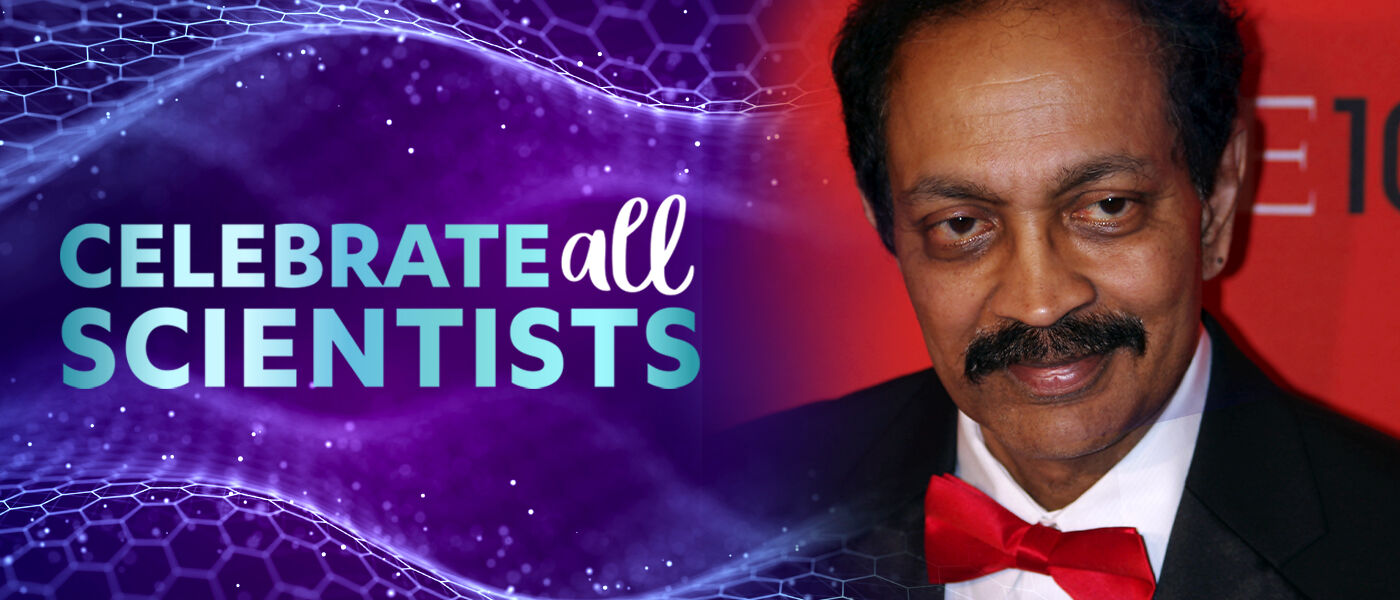Celebrate All Scientists: V. S. Ramachandran

May is Asian American & Pacific Islander Heritage Month, and today LSC is celebrating V. S. Ramachandran!
Vilayanur Subramanian Ramachandran is a neuroscientist with unusual methods for studying the brain. These methods have led him to amazing discoveries that continue to save lives. He’s also an acclaimed science writer.
Ramachandran tries to rely less on advanced technology, using it only when necessary, and more on simple techniques. Ramachandran told Frontline Magazine:
“Intuition is what gets you started; then you need empirical studies... brain-imaging technology often lulls you into a false sense of having understood what's going on. So sometimes, not having technology - that's my own approach and that of some of my colleagues, we use it only when it's absolutely essential, just like medical diagnostics. We rely more on intuition in doing simple experiments, because if you rely on fancy medical imaging, you become less creative.”
The solutions Ramachandran devises to medical problems can be as low-tech as his approach. Ramachandran invented a technique called “Mirror Therapy.” This innovation came about after he noticed patterns in the data relating to phantom limb patients.
Many people with missing arms or legs experience sensations in the missing limb, referred to as phantom limbs. In a small percentage of cases, those sensations can be painful, and the phantom limb can be “paralyzed,” meaning the patient feels the phantom limb is stuck and unable to move.
Data on these patients show that they’re more likely to experience this phantom paralysis – and often, the associated pain – if their limb was paralyzed before they lost it. This led Ramachandran’s team to wonder if this response was “learned” by the brain.
Their idea was that every time such a patient tried to move their limb, they see and feel it not moving, so they come to expect that it’s not going to move when they try. That expectation becomes stamped into the brain circuitry. Then, once the real limb is gone, that expectation is still there, hard-wired into the brain, which causes phantom limb paralysis.
To combat this, all you’d need to do is use mirrors! The team sets up mirrors to reflect, for example, a patient’s one good arm to make it look like there are two arms. Then, they tell the patient to try moving both arms at once. It would look to the patient like both arms had moved and thus create a new expectation: that when they tried to move their missing arm, it worked!
Besides treating phantom limb paralysis, mirror therapy is also used to treat hemiparesis – a condition in patients who’ve had a stroke which results in muscle weakness or partial paralysis on one side of the body.
Ramachandran continues to do research today, but he’s also a writer of multiple books on the topic. His book A Brief Tour of Human Consciousness: From Impostor Poodles to Purple Numbers is an excellent introduction to neuroscience for someone who knows nothing about the topic, and it also gives a fascinating account of his development of mirror therapy.
